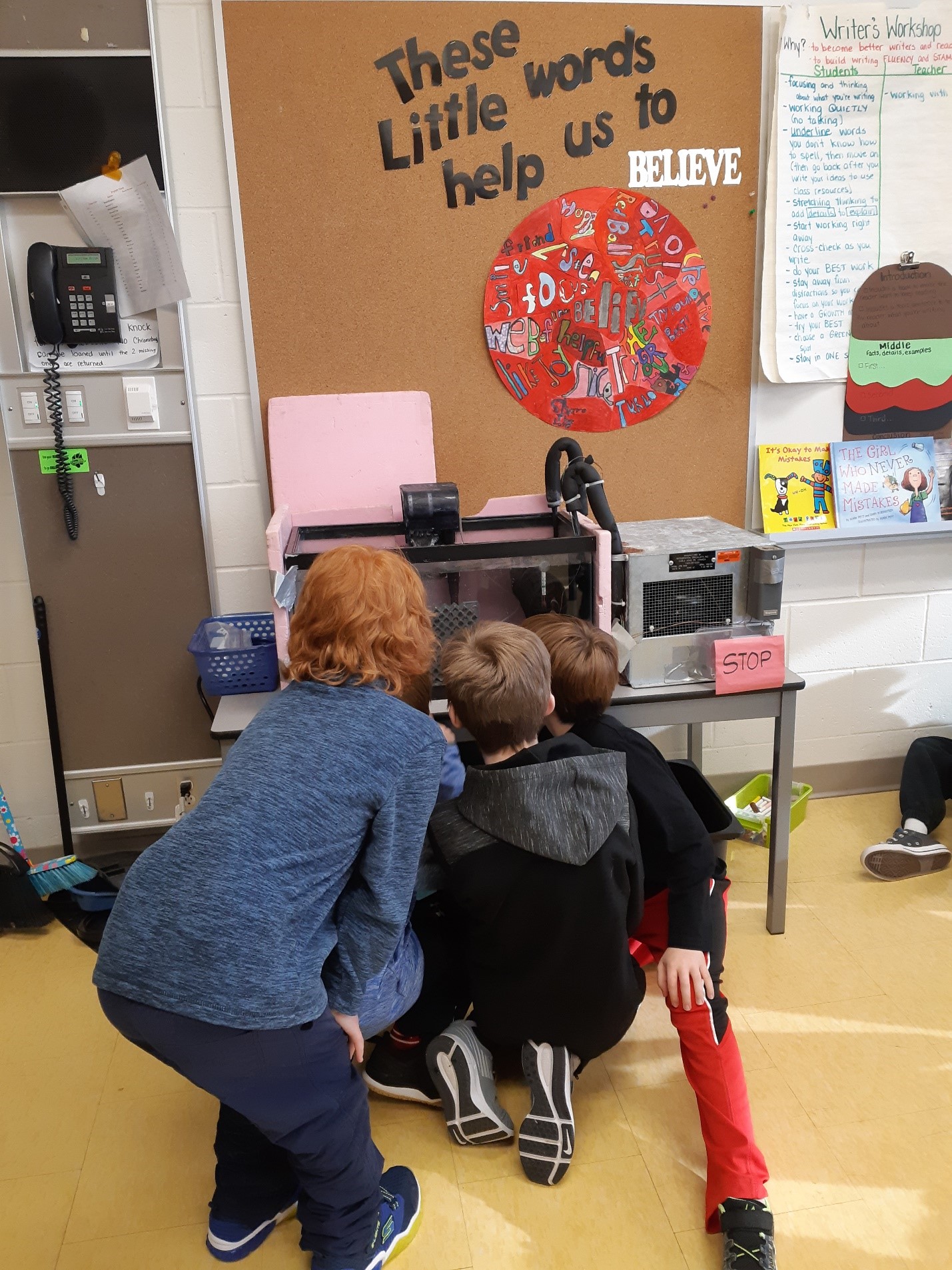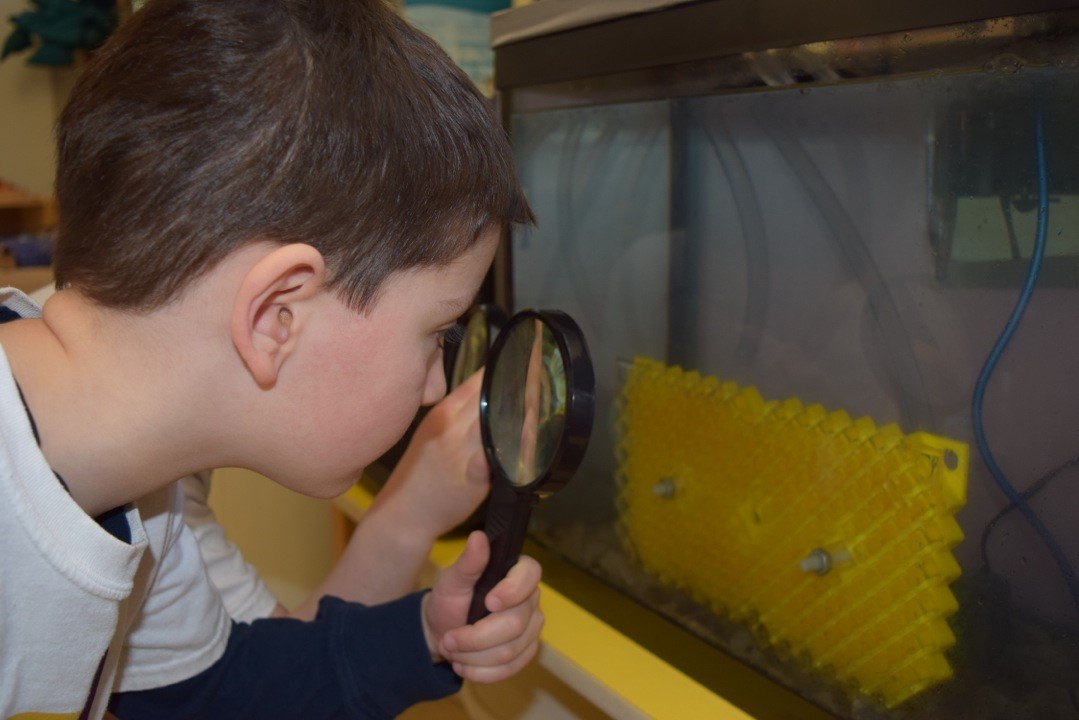Atlantic Salmon were extirpated from Lake Ontario over 120 years ago. As part of their restoration, the Bring Back the Salmon initiative runs a classroom hatchery program in classes across the Lake Ontario basin. The program consists of classes receiving 100 Atlantic Salmon eggs in January and raising them until they are released by students in a local restoration stream in May/June. This 5-month hands-on science lesson provides a local, real-world example of the consequences of negative environmental practices. Through this connection to nature in their communities and an understanding of our past, present, and future impacts on the environment, this program creates future stewards that will care about healthy watersheds and protect biodiversity. Each year, over 3,500 youth receive the full five-month experience in schools and another 8,000 have a shorter experience at other outreach locations.
Figure 1: A student watching Atlantic Salmon eggs grow as part of a classroom hatchery program (credit: Kathryn Peiman, OFAH).
Through a three-year Ontario Trillium Foundation Grow Grant, we are expanding the program and developing curriculum-linked lesson plans. These help teachers use the Atlantic Salmon experience in their classroom to meet provincial teaching standards.

Figure 2: Students participating in an Atlantic Salmon classroom hatchery program (credit: Kathryn Peiman, OFAH).
We initially created 12 lesson plans each for grades 4 and 6. Our program links directly with provincial science curricula for these grades (grade 4: Understanding Life Systems – Habitats and Communities; grade 6: Understanding Life Systems – Biodiversity). We have since created six lesson plans each for grades 1, 2, 3, and 5. This year we will create six lesson plans each for grades 7 and 8 and twelve lesson plans collectively for high school. These lessons link to science (anatomy, physiology, morphology), mathematics (temperature and degree day calculations), social studies (cultural history of the fish), history and geography (when and where they were found), the arts (creating songs and posters), language (new words), and health and physical education (games requiring movement like predator/prey tag and migration obstacles). These lesson plans will be freely available to any teacher who wishes to use a real-world example of native species restoration as part of their syllabus.
The lesson plans are still in the testing phase, and we welcome feedback from teachers (please contact ben_teskey@ofah.org). We have posted some lesson plans in a modified form for student learning at home. These are available for download under the Educational Resources header at https://www.ofah.org/covid19/.

